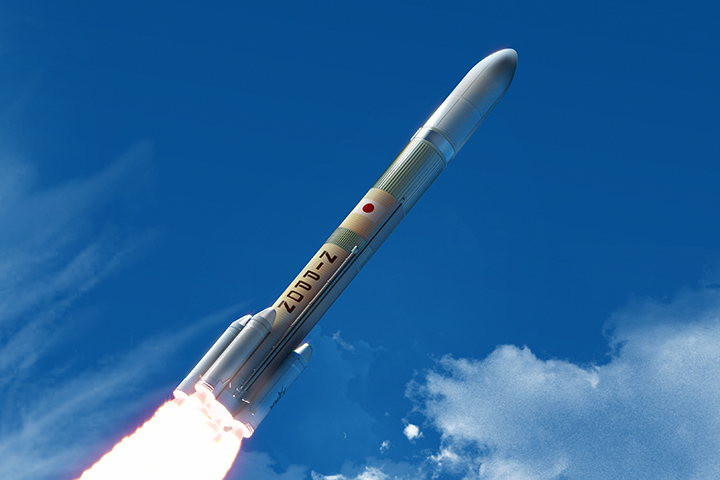The Japanese Space Agency in turn announces delays in the development of its future heavy launcher.
Change of fiscal year
After ArianeGroup which conceded at the beginning of July during this period of Covid-19 no longer being able to keep the date of December 24 for the inaugural flight of Ariane 6, it is the Japanese Space Agency (Jaxa) which announced Friday September 11 to postpone for a fiscal year (JFY - Japanese Fical Year) the two test flights of its future H3 heavy launcher, replacing the current H2A.
The first flight (without booster boosters and with the Earth observation satellite Alos 3), which was scheduled for JFY 2020 (between April 1, 2020 and March 31, 2021), thus slips towards JFY 2021, while the second (with Alos 4) goes from JFY 2021 to JFY 2022.
The first stage engine involved
The reason given is "a technical problem" on the LE-9 cryogenic engine of the first stage (1471 kN of thrust), under development.
On April 30, Mitsubishi Heavy Industries, the industrial architect of the launcher, carried out its seventh bench firing at the Tanegashima space center, south of the Japanese archipelago, for 240 seconds.
La Jaxa thought then to keep the fixed schedule, despite the risks of delays linked to the health crisis.
Work on the H3 was launched in 2014. The new Japanese two-stage launcher will be able to ship 6.5 t to the geostationary transfer orbit (against 6.1 t for the current H2A), with costs of reduced operation and greater flexibility of use.
Three Japanese achievements in 2020
Japan, which had gone from six orbital missions in 2018 to ... two last year, intends to return to its 2017 level this year, that is to say seven missions.
Three were carried out between February 9 and July 19: the IGS Optical 7 reconnaissance satellite (launched using the H2A), the ninth and last HTV cargo vessel bound for the International Space Station (with the latest H2B ), and the Emirati probe Al-Amal bound for the planet Mars (also on H2A).
Updates (still on H2A) of the GZS 1R positioning satellite and the JDRS data relay satellite are now expected by the end of the year.
The launch of the British geostationary telecommunications satellite Inmarsat 6-F1 (on H2A), on the other hand, has shifted in 2021, while that of the Vietnamese Earth observation satellite JV-LotuSat 1 (on Epsilon S) is no longer expected before 2023.
Découvrez cet article sur Air&Cosmos

